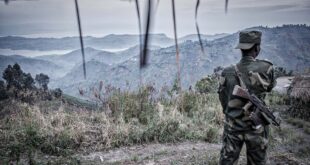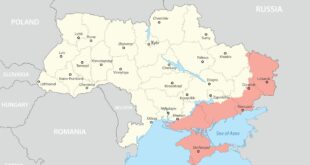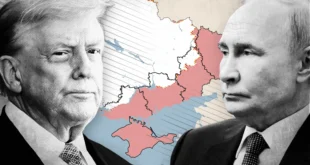The long-standing enmity between Iran and Israel has intensified in recent years, reaching dangerous new heights in 2024 and 2025. The animosity between the two nations, deeply rooted in ideological, geopolitical, and strategic rivalries, has manifested in proxy conflicts, cyber warfare, diplomatic isolation, and direct military confrontations. While much attention has been paid to the military and political dimensions of the conflict, there has been comparatively less focus on its human rights ramifications. This article seeks to explore the current Iran-Israel situation through a human rights lens, examining the conflict’s effects on civilian populations, the displacement of people, regional stability, freedom of expression, and international humanitarian law (Geneva Conventions, 1949).
Historical Background and the Escalation of Hostilities
Tensions between Iran and Israel are not new. Since the 1979 Islamic Revolution in Iran, which brought a theocratic regime to power, Iran has adopted an anti-Israel stance, supporting non-state actors like Hezbollah in Lebanon and Hamas in Gaza. In return, Israel has actively sought to curb Iran’s influence in the region, particularly focusing on Iran’s nuclear program, which it views as an existential threat (International Crisis Group, 2023).
Recent developments, particularly from 2023 onward, have seen a dramatic uptick in confrontations. Iran’s growing involvement in Syria and its support for armed groups along Israel’s borders have prompted frequent Israeli airstrikes. The situation took a turn for the worse in April 2024, when Iran directly launched missiles at Israel in retaliation for a deadly airstrike on its consulate in Damascus, a strike widely attributed to Israel. These escalations threaten not just national security but also the rights of ordinary civilians caught in the crossfire (UNHRC, 2023–2024).
Civilian Casualties and Displacement
One of the gravest human rights concerns in any conflict is the impact on civilian life. In both Iran and Israel, as well as in conflict-affected neighboring regions like Gaza, Lebanon, and Syria, civilians have suffered as a result of retaliatory strikes, drone attacks, and bombardments (Human Rights Watch, 2024; UN OCHA, 2024).
In Syria and Gaza, where Iranian-backed militias and Israeli forces have frequently clashed, human rights watchdogs have reported increasing numbers of civilian casualties, including women and children (UNHRC, 2023–2024). The use of high-impact weaponry in densely populated areas raises serious questions about the proportionality and distinction principles enshrined in international humanitarian law (IHL), particularly the Geneva Conventions.
Furthermore, the violence has led to the displacement of thousands. Refugees from Syria and Lebanon, already displaced by previous conflicts, now face renewed insecurity. Within Israel and Iran, communities living near military installations or targeted zones have been forced to flee, often without warning, and with limited access to shelter, medical care, or basic necessities (UN OCHA, 2024).
Suppression of Dissent and Freedom of Expression
Another overlooked dimension of the Iran-Israel tension is the internal suppression of dissent. Both countries, though differing vastly in governance, have seen clampdowns on civil liberties in the name of national security.
In Iran, the government has historically used external threats to justify repression. The escalation of the Israel conflict has only intensified surveillance, censorship, and arbitrary detentions. Protesters, journalists, and minority groups, particularly ethnic Arabs and Kurds have to face harsh treatment if they voice opposition to the regime’s foreign policy. The execution of political prisoners and restrictions on access to information remain serious concerns.
In Israel, while the country maintains a more robust democratic framework, there have been criticisms regarding the marginalization of Arab Israelis and increased state control during periods of heightened military conflict. Human rights groups have pointed out the use of emergency regulations to curb protests and the targeting of dissenting voices, especially those critical of Israel’s military policies in Gaza and Lebanon (Human Rights Watch, 2024).
Impact on Minority Communities and Vulnerable Populations
The conflict has disproportionate impacts on already vulnerable populations. In Iran, religious minorities such as Baha’is and Christians face systemic discrimination, and tensions with Israel are often used to justify crackdowns on these communities. Similarly, Sunni Arabs and Kurdish populations are often viewed with suspicion and treated as potential collaborators with foreign enemies (Amnesty International, 2024).
In Israel and the Occupied Palestinian Territories, the situation is equally dire. Palestinian civilians continue to bear the brunt of Israel’s military operations, particularly in Gaza, where infrastructure is decimated, and humanitarian access is severely restricted. The blockade on Gaza, coupled with frequent bombings, has created a human rights crisis which includes limiting access to clean water, electricity, medical supplies, and education.
Proxy Warfare and Accountability
One of the most problematic aspects of the Iran-Israel conflict is the use of proxy warfare, which severely complicates accountability. Iran’s support for groups like Hezbollah, Hamas, and various Shi’a militias allows it to wage war indirectly, often without assuming direct responsibility for violations of human rights or IHL (International Crisis Group, 2023).
Israel, in turn, often responds to attacks from these groups with disproportionate force, leading to accusations of collective punishment. For example, Israel’s blockade and military campaigns in Gaza, intended to weaken Hamas, frequently harm civilians more than combatants, drawing criticism from international legal bodies.
This proxy dynamic enables both nations to operate in legal grey zones. The lack of transparent investigations, accountability mechanisms, and effective legal recourse exacerbates the suffering of affected populations.
Nuclear Proliferation and the Right to Peace
Iran’s nuclear ambitions have been a central source of tension. While Iran insists its program is for peaceful purposes, Israel and its allies view it as a cover for weapons development. The collapse of the Joint Comprehensive Plan of Action (JCPOA) and the absence of a viable replacement have added to the instability.
From a human rights perspective, the specter of nuclear conflict threatens the right to life, security, and peace. Any military conflict involving nuclear facilities whether sabotage, bombing, or cyberattacks carries catastrophic risks not just for Iran and Israel but for the broader region and world. Environmental degradation, long-term health impacts, and displacement from radioactive contamination would be devastating (Geneva Conventions, 1949).
The Role of International Actors and Legal Frameworks
The international community has a responsibility to address the human rights implications of the Iran-Israel conflict. However, responses have been inconsistent and often politicized. While Western nations routinely condemn Iran’s actions, they are more muted in criticizing Israeli violations, particularly in the Occupied Territories.
International bodies like the United Nations have struggled to mediate effectively due to political divisions. Nevertheless, frameworks like the Universal Declaration of Human Rights, the International Covenant on Civil and Political Rights (ICCPR), and the Geneva Conventions provide a robust legal basis to hold both parties accountable (Geneva Conventions, 1949; UNHRC, 2023–2024).
Human rights organizations and civil society actors must continue documenting abuses, advocating for accountability, and pressuring governments to prioritize civilian protection over strategic interests.
Conclusion: A Human-Centered Approach to Peace
The Iran-Israel conflict, often viewed through the lens of geopolitics, must also be examined through its human toll. The suffering of civilians, suppression of freedoms, exploitation of minority communities, and the erosion of accountability mechanisms reveal a complex web of human rights violations that cannot be ignored.
A sustainable resolution requires more than military deterrence or diplomatic isolation. It demands a human-centered approach that upholds the dignity and rights of all affected peoples. The international community must move beyond rhetorical condemnations and work toward concrete mechanisms of conflict resolution, disarmament, and humanitarian protection.
Only by centering human rights in its response can the world hope to break the cycle of violence that has plagued Iran, Israel, and the broader Middle East for generations.
 Geostrategic Media Political Commentary, Analysis, Security, Defense
Geostrategic Media Political Commentary, Analysis, Security, Defense





